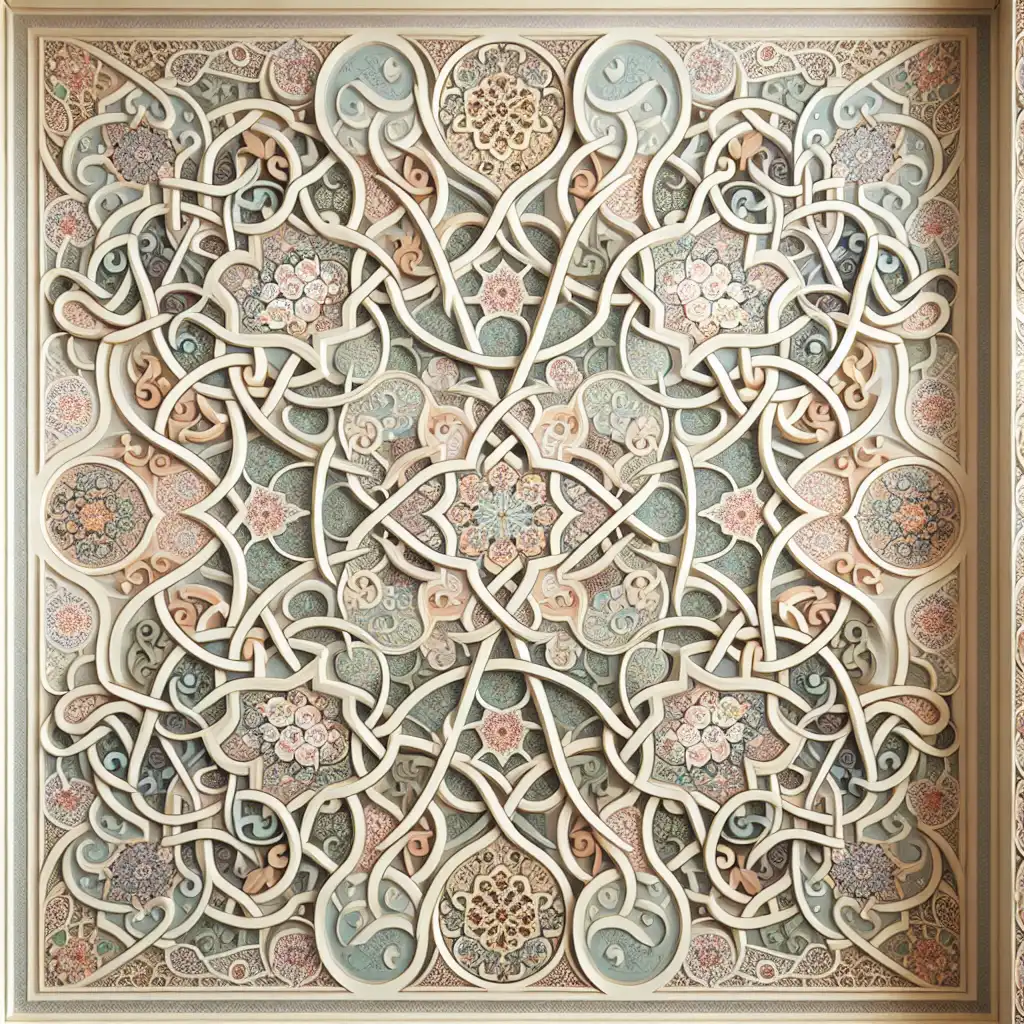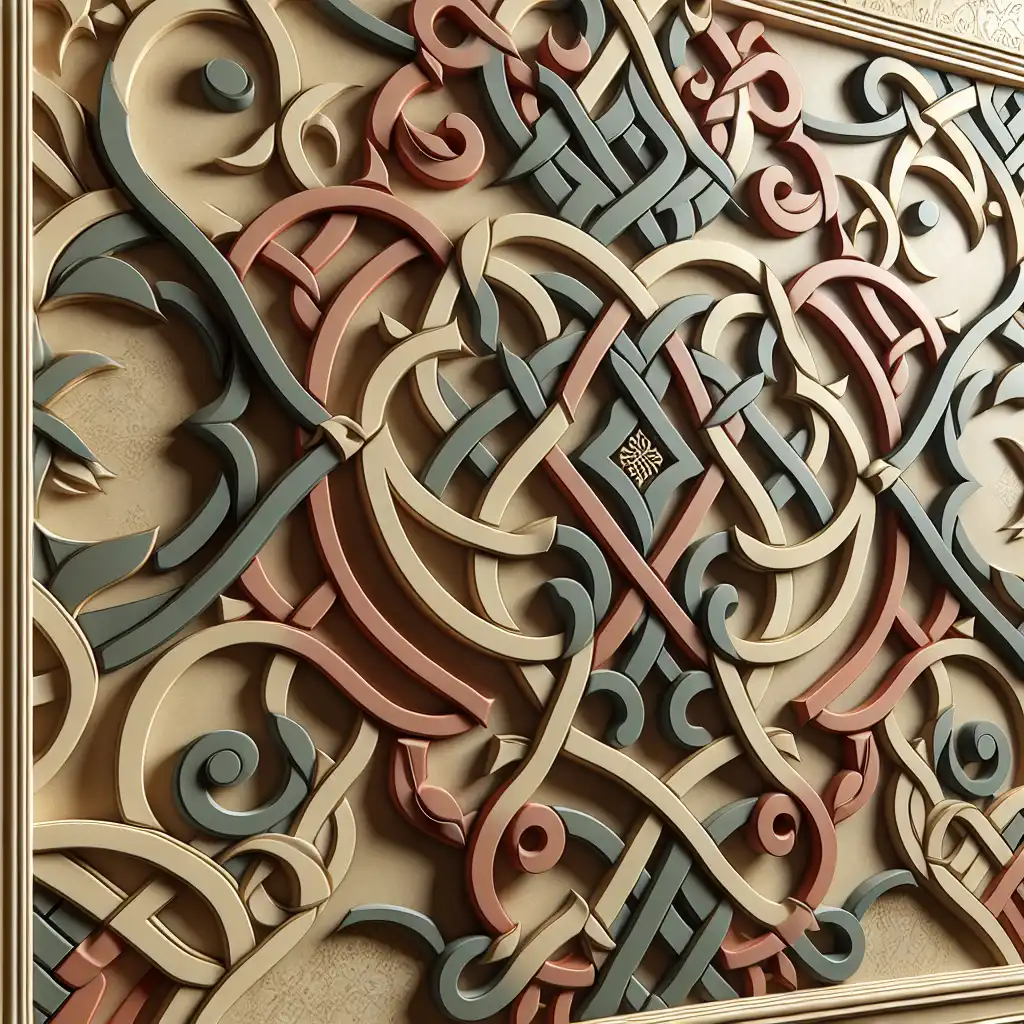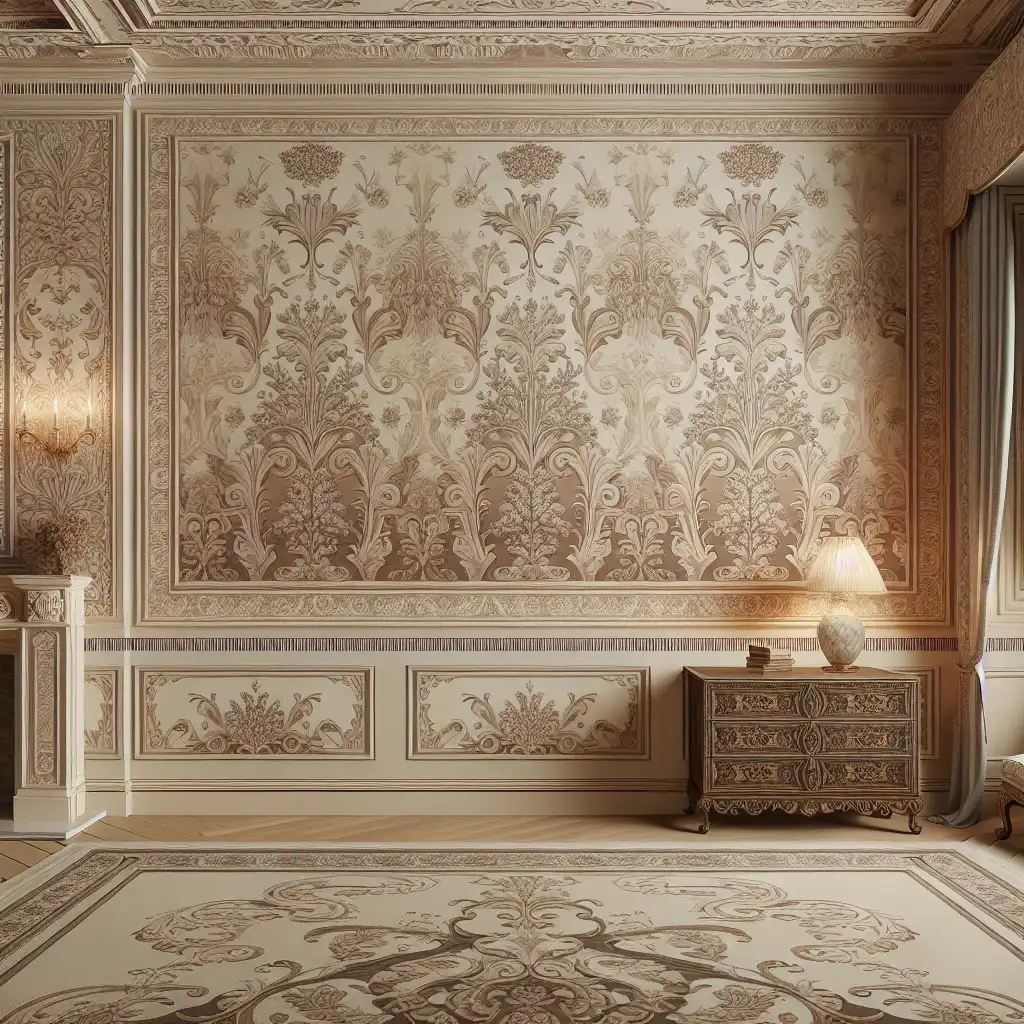
Arabesque
Cultural Origin
Arabesque in art reflects Islamic culture's avoidance of human figure representation.  Artists created complex arabesques to decorate mosques without depicting people or animals.
Artists created complex arabesques to decorate mosques without depicting people or animals.
Geometric Patterns
Arabesque designs often involve repeated geometric shapes without beginning or end.  The tiling featured geometric arabesques that interlaced seamlessly.
The tiling featured geometric arabesques that interlaced seamlessly.
Not Just Islamic
Although common in Islamic art, arabesque has influenced many global artistic styles.  The wallpaper adopted arabesque motifs popularized during the Victorian era.
The wallpaper adopted arabesque motifs popularized during the Victorian era.